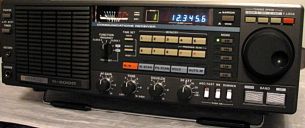Internet Repeater Linking
A rapidly growing amateur radio activity is the linking of amateur repeaters via the internet. The technique has been used since the early 1990s. The first popular system was called I-Phone, which was based on a Windows operating system. I-Phone's popularity peaked on January 26, 2001, when amateurs throughout Australia and internationally communicated via a special Australia Day link-up of repeaters.
A newer system (known as Internet Repeater Linking Project or IRLP) has since supplanted I-Phone. IRLP, developed by David Cameron VE7LTD, is based on the Linux operating system. It is more reliable than I-Phone and is easier to use. Further information on IRLP appears at http://www.irlp.net
If you connect to an IRLP service (via a node) you will have the option of choosing another node you wish this node to connect to. Using a directory of node numbers you can select the distant node. After connecting to that node (a bit like dialling an STD or IDD code) you can then call CQ (or call a specific callsign you know is in that area). That distant area could be anywhere in the world. Some radio amateurs take suitable equipment with them when travelling interstate or abroad and make IRLP contacts with friends back home, or maintain contact with other friends around the world, while on their travels. It's an amateur radio use of internet connections.
In some amateur circles, this is not regarded as a true amateur radio contact. However all innovations are initally greeted with either disbelief, shock or disdain, and in radio, the introduction of voice transmissions instead of morse, the use of SSB instead of AM, the use of FM instead of AM on VHF and the use of computers for log keeping and digital signal processing are all innovations that eventually find a happy resting place within the range of amateur radio activities. IRLP will undoubtedly be another of those innovations.
Next: WIA

